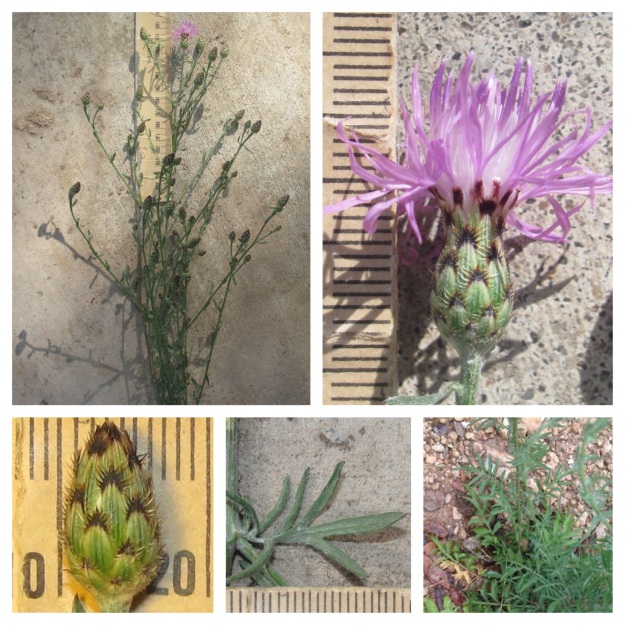As spring wildflowers begin their annual show across Texas, it would be helpful for all of us to be on the lookout for Spotted Knapweed (Centaurea stoebe), the latest exotic invasive arrival in the Lone Star State. I wrote last year that Spotted Knapweed has never been found in Texas before and now it is here because of seed contamination susceptibility of the wild harvest model (WHM) used in some grassland restorations. Enjoy this year’s wildflower show – it should be a banner year in Far West Texas.
From November 2014 – “The Discovery of Spotted Knapweed in Texas: Why Seed Origin Matters”
Abstract
In the summer of 2014, Spotted Knapweed (Centaurea stoebe), became the latest exotic member of the flora of Texas. Its seeds arrived as a contaminant of a wild harvest originating in the Central or Northern Great Plains, which was purchased by a Texas-based seed dealer. This invasive introduction highlights the many risks and flaws that are inherent and eternal to the wild harvest model. Almost all of the native prairies in Texas have been plowed up and converted to “improved” pastures full of exotic species and all remnant prairies have been invaded by exotic plant species. Some seed dealers supplement their seed stocks by purchasing bulk “wild harvests” from northern seed growers. Unfortunately, those wild harvests are within the distribution ranges of many exotic species like Spotted Knapweed. Certified native seed of selected native germplasms is the only way to go in helping to maintain native plant communities against exotic species increases and implement successful restoration plantings.
The Inherent Faults and Eternal Flaws of the Wild Harvest Model
- Seed production is highly variable. Some years the production and quality are the mother-lode; other years it’s a bust. Such inconsistent seed production and quality makes wild harvests unpredictable and costly, leading many wild harvest-based companies to supplement their seed stocks with commercial germplasms during years of lean seed production in “wild” stands. Consequently then, lack of supply also leads to use of exotic grasses in mandated seedings.
- Origin(s) of WHM seeds are often unstated. While some companies may tell you the origins of the harvest or the seed lots, many will not. Beware of those who refuse to give out that critical information. You, as a consumer, have a right to know where the seed originated from! Wild harvested seed is often 2-3 times more expensive than select native germplasm seed. As a straight comparison, based upon pure live seed (which is unstated for wild harvested seed), certified select native germplasm (SNG) seeds may cost as little as 1/10th the price of wild harvested seed. Your dollar goes further and covers more acreage using the SNG model.
- Because the wild harvest model is limited to sites that are large enough to make it cost effective for the use of combines and labor, so too are the genetics within each site limited. The vigor of plants in the populations from which the seeds are harvested is unknown. Plant vigor and performance is critical to restoration success and competitive ability amongst the many exotic species in the state.
- Areas of adaptation of wild harvested seed is not known. They are untested and unproven in many areas.
- The issue of exotic species contamination is huge with the wild harvest model. The Spotted Knapweed fiasco illustrates this very clearly: because of the many inherent holes in the WHM, we have Spotted Knapweed in Texas today!



Couldn’t you have let me enjoy the spring flowers just a bit longer before bring up the scourge of invasives? 😉 I’ll be doing battle with garlic mustard again soon. Unless there’s something new I haven’t heard about yet. Soldier on!